The Indian state of Assam is famous for its rich biodiversity. The state is home to various venomous and non-venomous reptile species. Here is a list of 10 venomous Snakes of Assam with pictures.
King Cobra

Scientific Name: Ophiophagus hannah
IUCN Red List Status: Vulnerable
The King Cobra is one of the most venomous snakes found on the planet. This is the longest venomous snake in the world with the highest measured record of 19.2 ft. With an average length of 12 feet, this giant can literally stand up and look a full-grown man on his eyes. The amount of neurotoxin that this species can deliver at a time is enough for killing 20 people and even an elephant. But because of its shy nature, this snake always maintains a safe distance from human.
This snake is endemic to the Indian subcontinent and prefers rainforests, bamboo thickets, high altitude grasslands and mangrove swamps as its habitats. Other snakes, both venomous and nonvenomous are the main food of King Cobra. The King Cobra is the only snake species in the world which makes nest for hatching.
This species is now facing threat due to its rapid habitat loss. The Red List published by the International Union for Conservation of Nature (IUCN) has placed this snake as a Vulnerable species. The King Cobra is regarded as the National Reptile of India.
Banded Krait
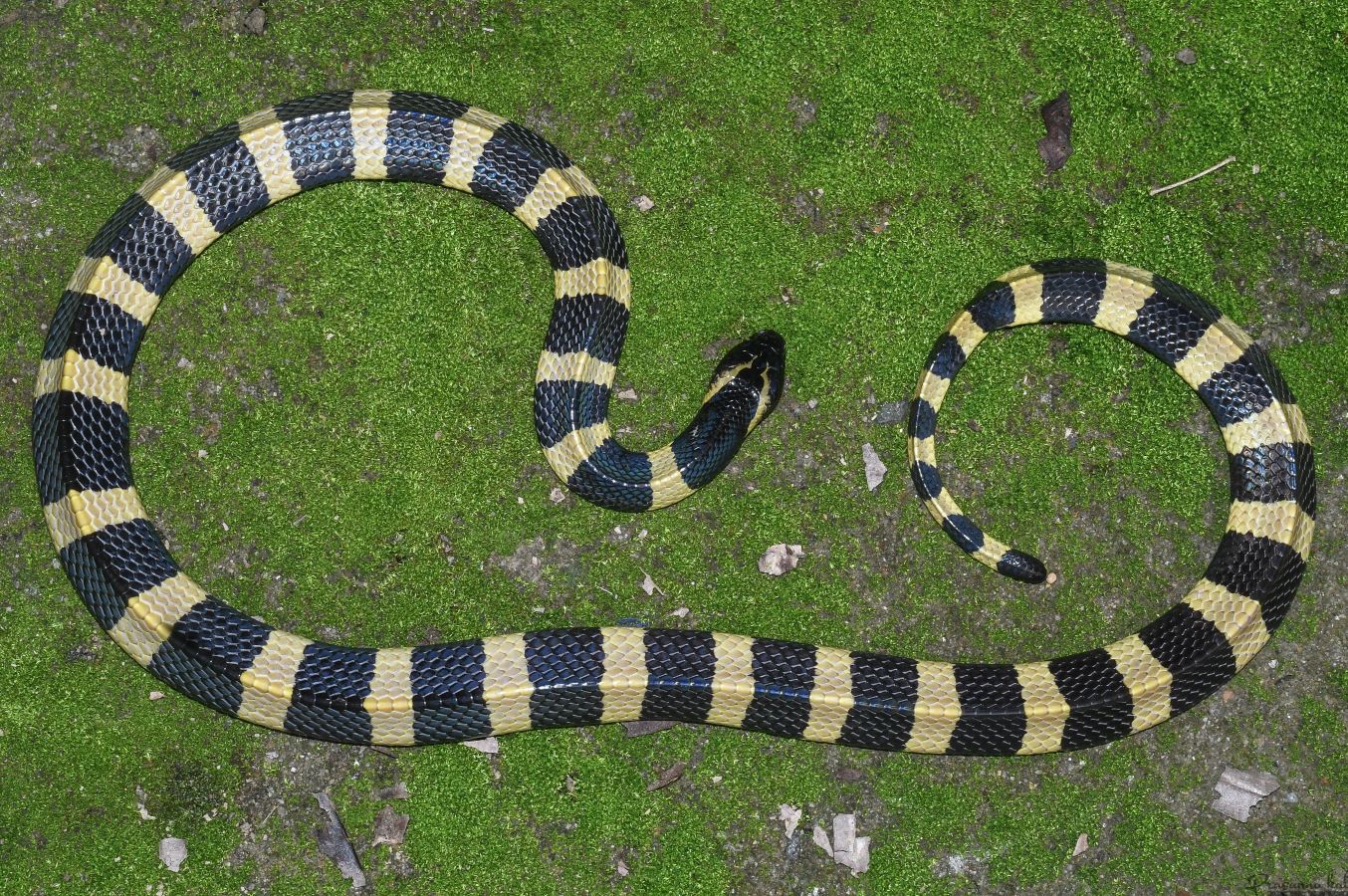
Scientific Name: Bungarus fasciatus
IUCN Status: Least Concern
Banded Krait is a highly venomous snake found in the Indian subcontinent and Southeast Asia. With an average length of 1.8 meter, this is the longest krait species in the world. This snake is easily identified with its alternate yellow and black crossbands on the body. Banded Krait is very shy and slow snake. Normally it never attempts to bite unless harmed.
This snake species is found in forests and open lands including near human habitations specially in the village area. Banded Krait feeds on other snakes, fishes, frogs and skinks. This snake is lethargic even under provocation during day time. They are found lying in pits or on open grasslands. But they become active at night. Banded Krait is one of the most venomous snakes of Assam. There is a belief in Assamese society that this snake has two mouths. But this is only a myth, as this snake has only one mouth as seen in the picture.
IUCN has marked this species as Least Concern up till now as their population is found stable.
Monocled Cobra

Scientific Name: Naja kaouthia
IUCN Status: Least Concern
The Monocled Cobra or Indian Spitting Cobra is a widespread cobra species found in South and Southeast Asia. This is a very commonly found snake in the state of Assam. This cobra has an “O” shaped or monocellate hood pattern on the rear side of its hood. The length of an adult snake is between 1.3 m to 1.5 m.
Monocled cobra is found in a wide range of habitats including grassland, shrubland, forest, agricultural land and even towns and cities. It is found in an elevation up to 1000 meters above sea level. Monocled Cobra is a most common snake of Assam.
This venomous snake species feeds on small mammals, snakes and fishes. It becomes more active during dusk and prefers habitats which associated with water. As per IUCN Red List, Monocled Cobra is a Least Concern species because of its wide distribution in its range.
Red-necked Keelback
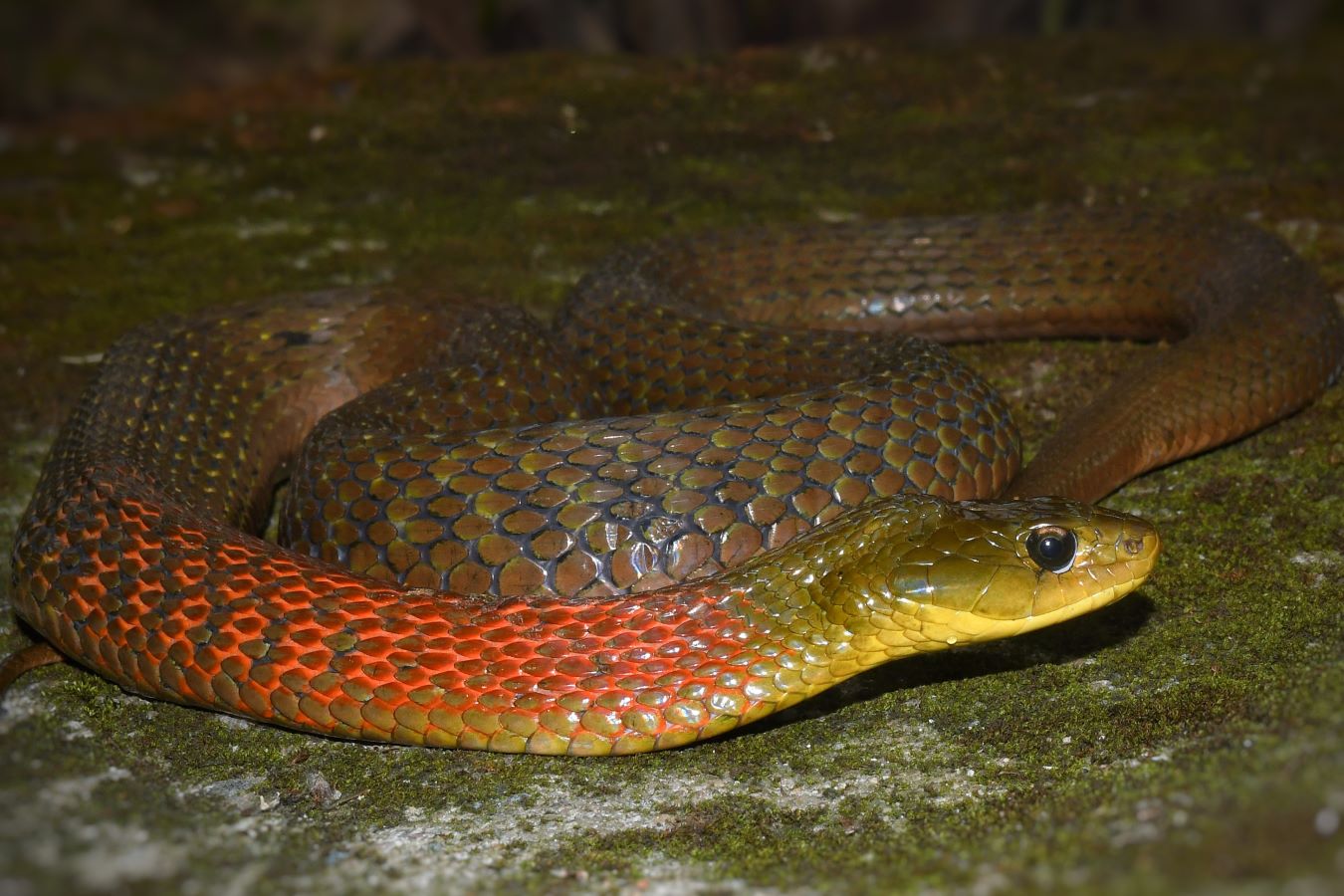
Scientific Name: Rhabdophis subminiatus
IUCN Status: Least Concern
The Red-necked Keelback is a highly venomous snake found in Asia. The body is greenish blue with a red and yellow patch near the head. This snake is a semi aquatic reptile normally seen active during day time. An adult snake grows up to 70 – 90 cm in length.
This snake inhabits near water bodies and feeds on frogs, fishes and other small aquatic mammals. Red-necked Keelback is found in the forests and near human habitations in Assam. This is one of the most common snakes of Asam.
The red-necked keelback is a Least Concern species as per IUCN Red List because of its wide distribution.
Greater Black Krait
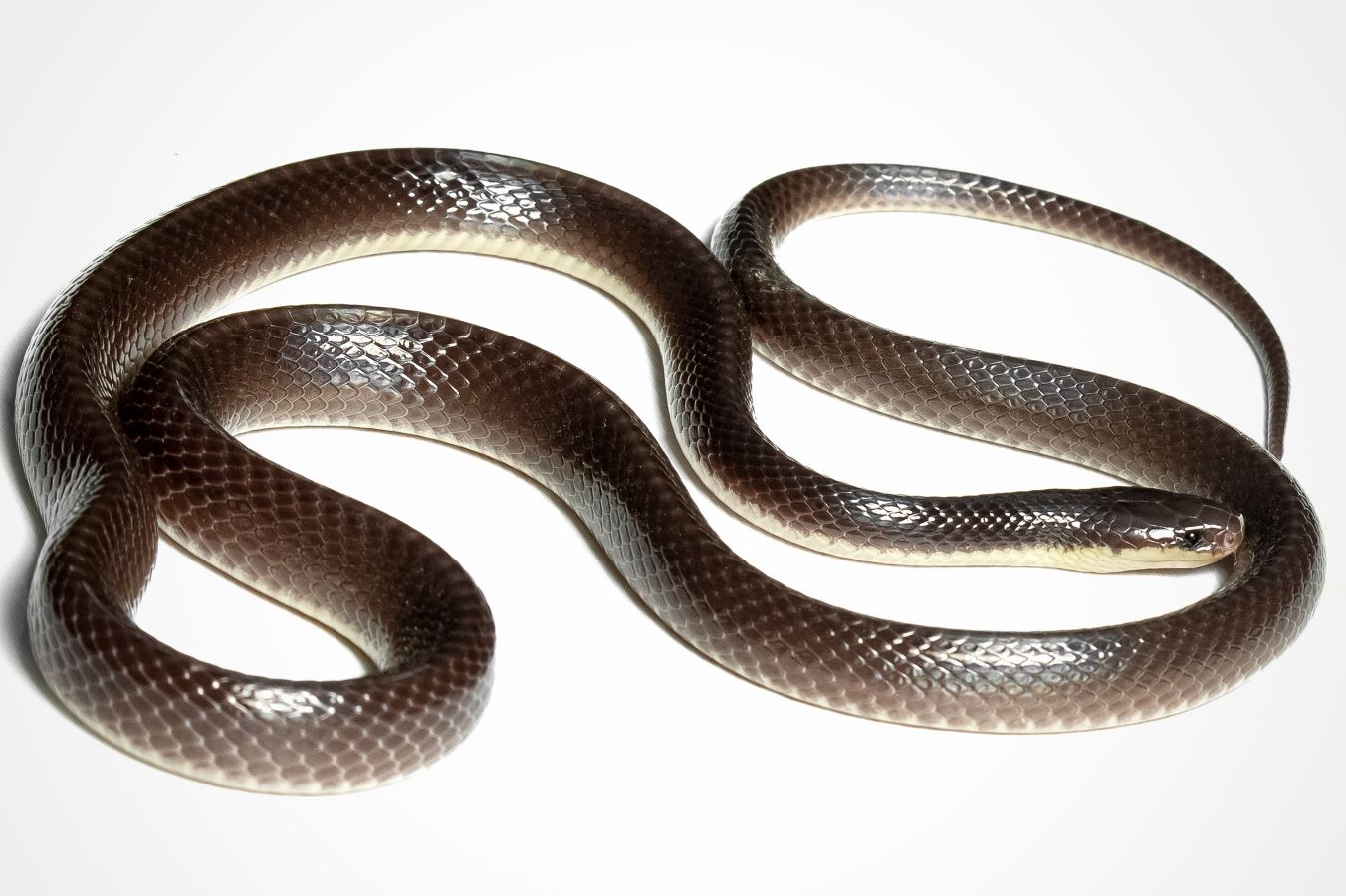
Scientific Name: Bungarus niger
IUCN Status: Least Concern
This medium sized snake has a pattern less uniform black body almost similar to the Lesser Black Krait. This venomous nocturnal reptile feeds on snakes, small mammals and occasionally frogs and fishes. The maximum measured length of this snake is 130 cm.
The Greater Black Krait inhabits in a wide range of habitats from mangrove swamps to populated villages.
This is a Least Concern species as per the IUCN Red List.
Lesser Black Krait
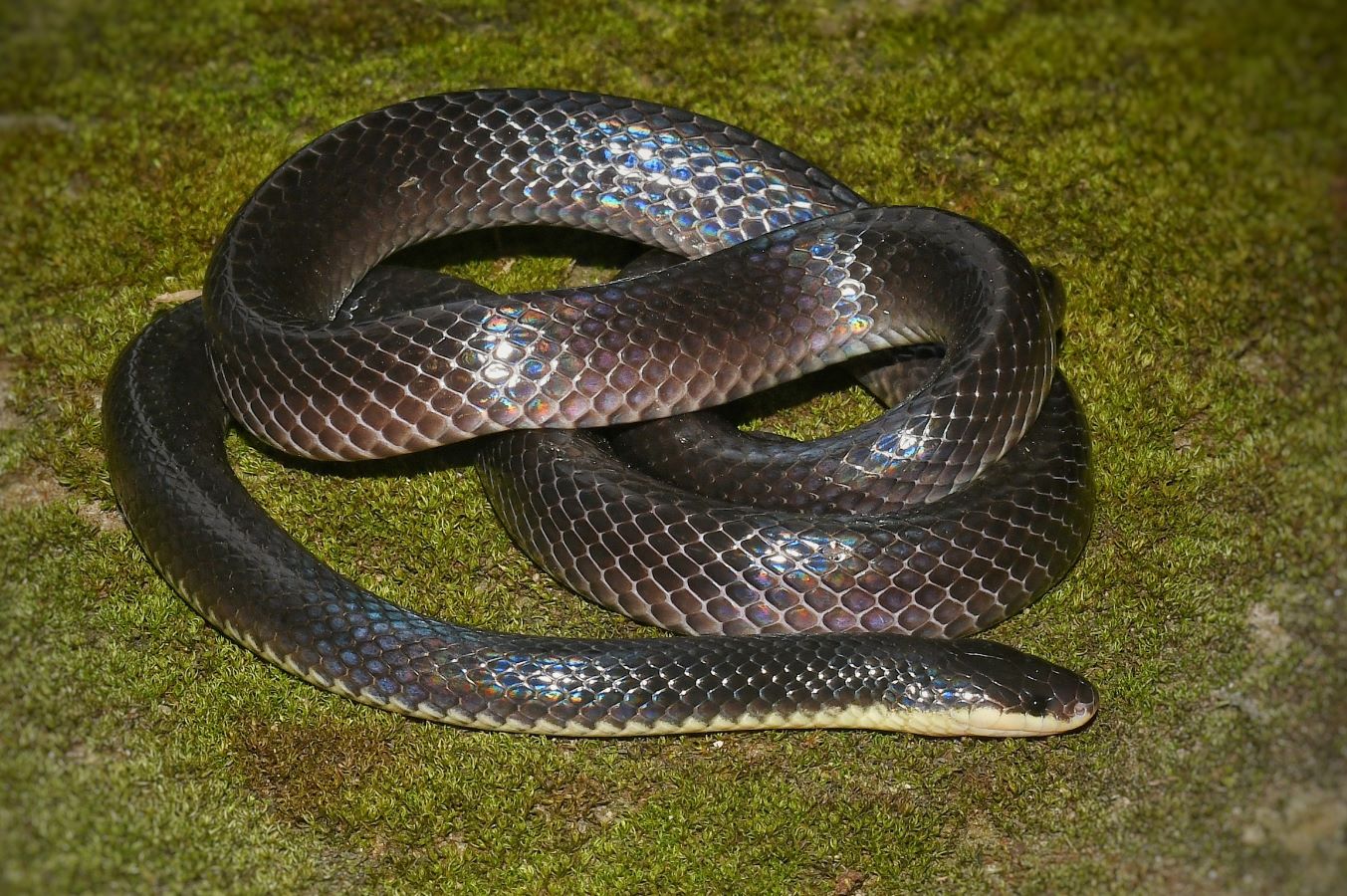
Scientific Name: Bungarus lividus
IUCN Status: Least Concern
This venomous snake is endemic to the Indo-Malayan realm. The average length of this small sized snake is only 102 cm. This snake is also a nocturnal species which prefers habitats associated with water body. Their ideal habitats are paddy fields and human habituated areas.
This small reptile feeds on rodents and other small reptiles.
As per IUCN Red List, this is a Least Concern species so far. This snake is widely distributed in the entire state of Assam.
Salazar’s Pit Viper
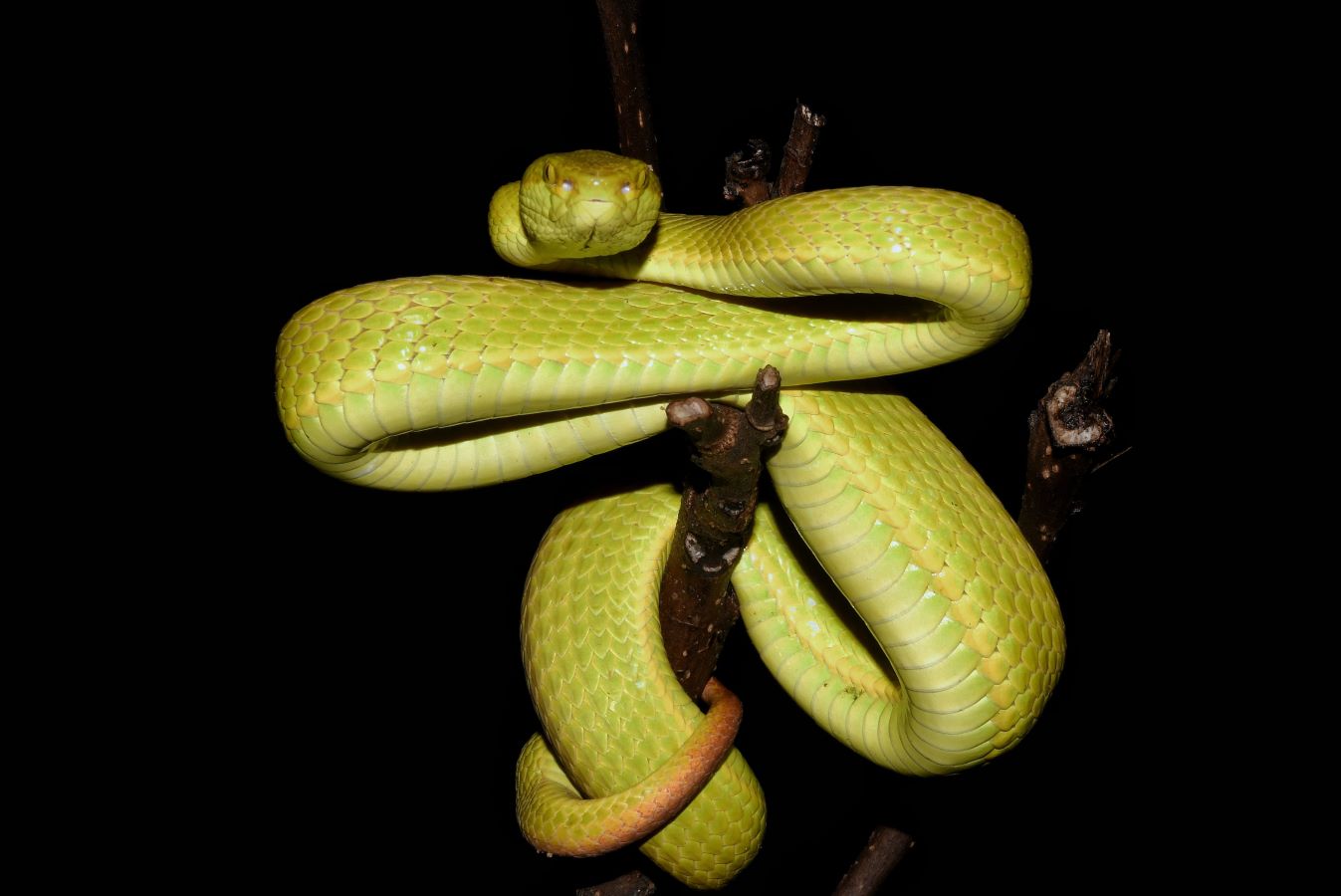
Scientific Name: Trimeresurus Salazar
This venomous green pit viper species was first discovered in the year 2019 in the lowland of western Arunachal Pradesh and named after the popular character of Harry Potter, Salazar Slytherin.
This snake has a dark green head and yellowish green dorsal scale on the rest of the body. The average length of an adult snake is 363 to 415 mm. This new species of snake is distributed in the eastern parts of the Himalayas including the states of Assam, Arunachal Pradesh, Mizoram and Meghalaya.
This pit viper feeds on amphibians, birds, rodents and small mammals.
Green Cat Snake
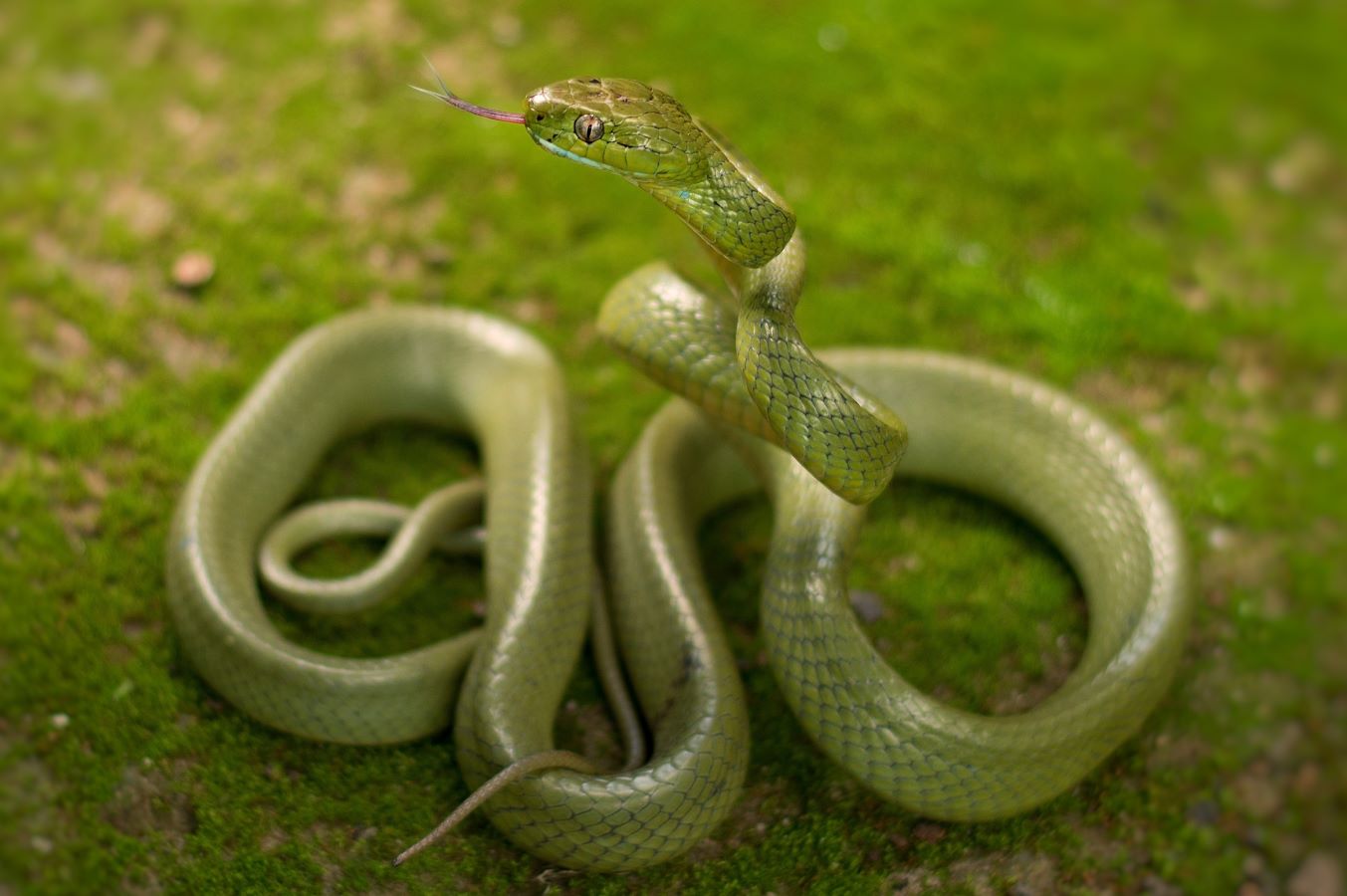
Scientific Name: Boiga cyanea
IUCN Status: Least Concern
The unmistakable Green Cat Snake inhabits in primary and secondary forests including montane zones. The average length of this snake is 115 cm. The head is large, eyes are also large with vertical pupils. This snake is mildly venomous.
This is a nocturnal reptile, coiled up amongst tree branches during day time and actively hunts for prey at night. Its normal prey is different types of geckos. In India this snake is found in the North eastern states including Assam. It is also found in some parts of West Bengal and Andaman.
As per IUCN Red list, this is a Least Concern species because of its wide distribution in its range.
Arrowback Tree Snake
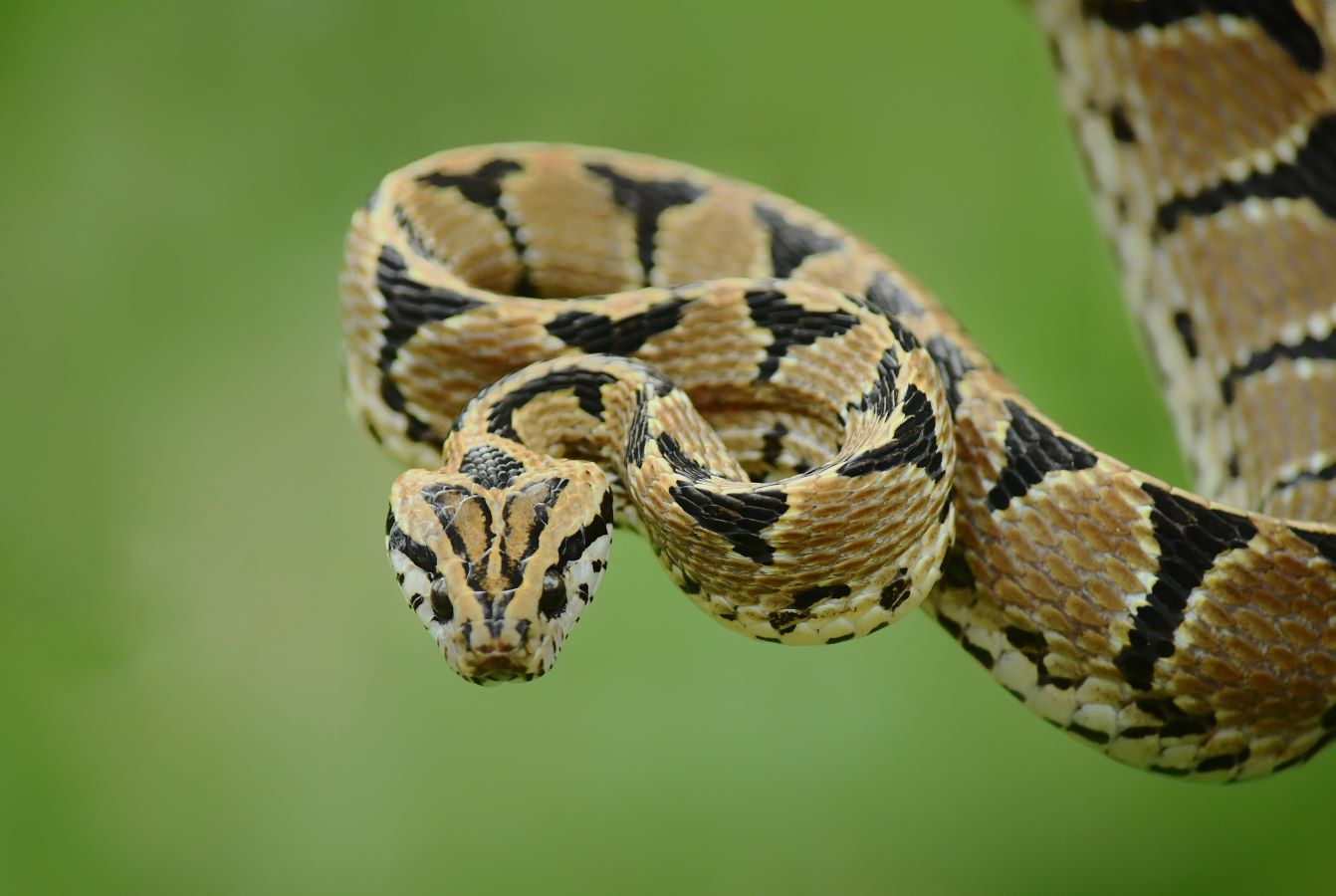
Scientific Name: Boiga Gocool
IUCN Status: Least Concern
This mildly venomous snake species is found in the North eastern states of India including Assam. This snake prefers grasslands, forests and plantations for its ideal habitat.
With a maximum length of 120 cm, this snake feeds on rodents, lizards and small birds.
Mock Viper
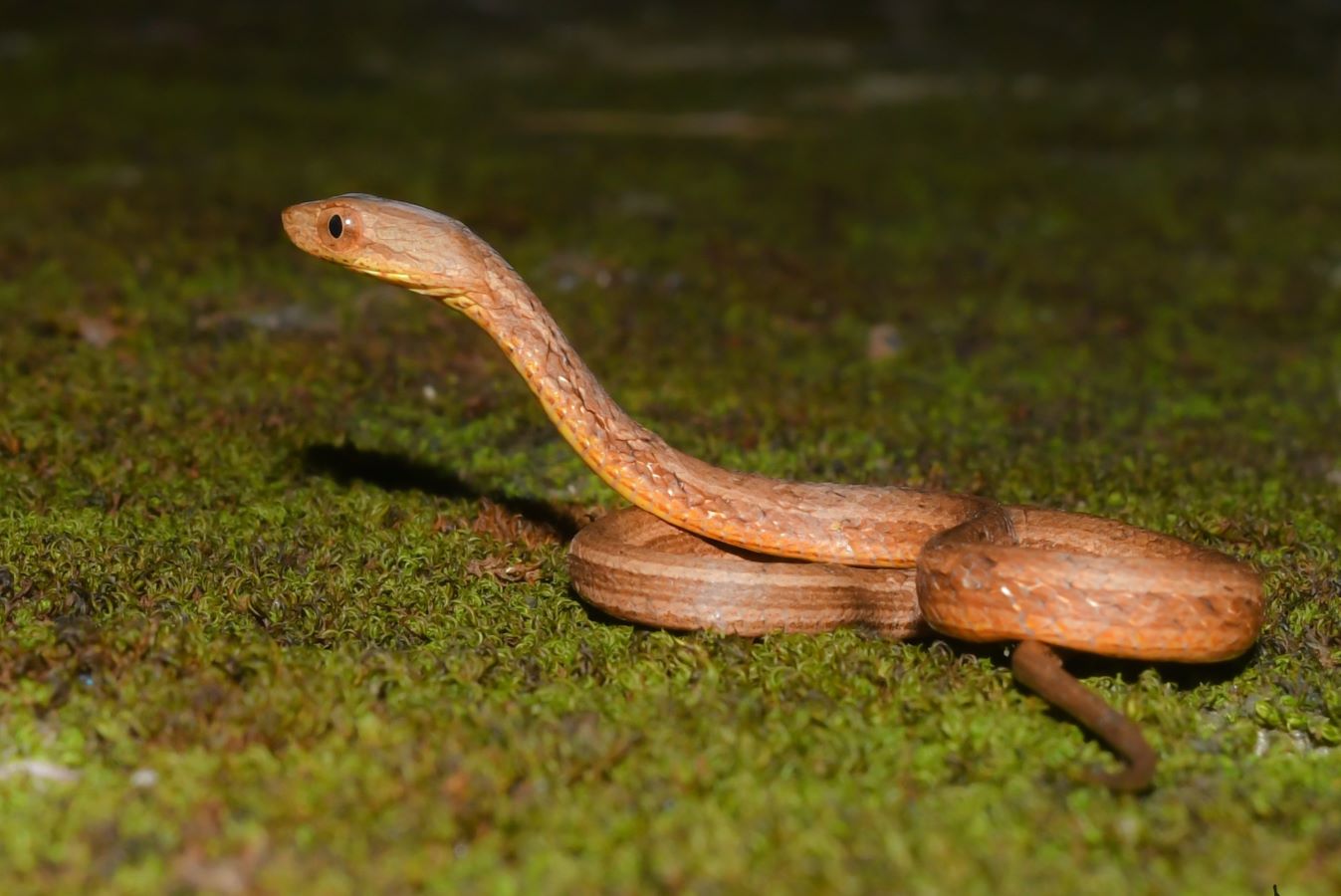
Scientific Name: Psammodynastes pulverulentus
IUCN Status: Least Concern
This mildly venomous small-sized snake is native to Asia. In India it is found in the North Eastern states including Assam and Jalpaiguri district of West Bengal. The interesting mimicking ability of this snake is that when threatened, it can change the shape of its pupils to look like a viper.
This snake inhabits in the tropical moist forests often near the water.
As per IUCN Red List this is a Least Concern species because of its sizable population within its range.
Snake Bite: Snake bite is considered to be an accident. Immediately consult with your doctor in case of snake bite.
Special thanks to: @prasanna.kalita and @Bonyabondhu
Also read: BIRDS OF ASSAM
Nice 👍
Thanks